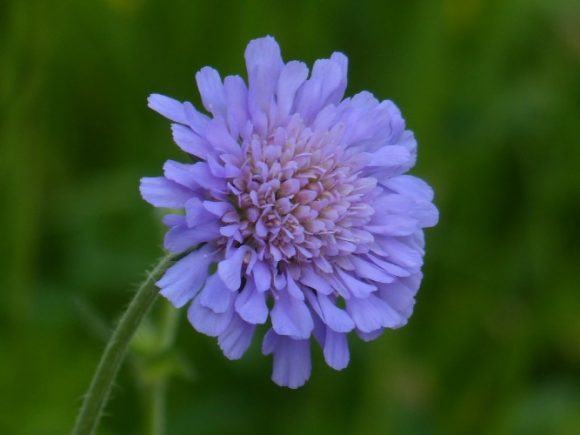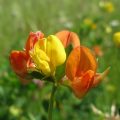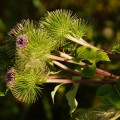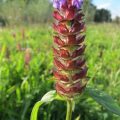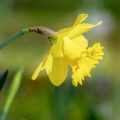- The Miraculous Shiny Bush Plant - January 18, 2021
- Colorful, Edible and Medicinal Celosia - January 10, 2021
- Radish, a Nutritional Power House - December 19, 2020
Field scabious, or knautia arvensis, is a perennial, flowering herb native to the Northern regions of Africa and Europe. The plant is also known as scabious, blue buttons, lady’s pincushion and gypsy rose. Field scabious was introduced as an ornamental plant in North America but escaped from gardens and now grows in the wild. Due to its ability to seed and spread fast, it is now considered a noxious or invasive weed in some North American states.
[Note: The Right Flowers is not a medical site. Knowledge of and information about the therapeutic benefits and applications of flowers, while known through the ages, does not constitute medical advice. If you are having health issues, you should consult with a physician.]
Field scabious prefers to grow in loose, loamy soils such as along river bank, on pastureland, meadows and light-filled forests. It has very hardy roots that are hard to get rid of when they get established.
The plant has rosette-shaped foliage and brings forth beautiful, blue or lilac colored blossoms in summer which make the plant hard to miss when they are in bloom. It has very neat blossoms grouped into clumps with the center flowers bearing a more regular shape compared to blossoms at the edge. The flowers are considered excellent as cut flowers and can last up to 10 days in a vase.
Gardeners often use the plant to brighten and add color to their gardens because of their large, bright flowers. This explains why, in spite of being declared a noxious weed in some regions, the plant is still grown in pursuit of its beautiful, showy flowers.
The plant’s generic name, knautia, is borrowed from a 17th-century botanist, Dr. Knaut. The name scabious is derived from the word scab, meaning a scaly sore. This word is borrowed from the Latin word for scabies, a type of leprosy. Scabious got the name because it was a renowned cure for scabies.
During the 16th century, John Gerard, the English herbalist, wrote that drinking an infusion of this plant was ideal for resolving skin problems. He also claimed taking the infusion promoted sweating which freed the heart from various pestilences and infections.
Apart from its widespread use as a remedy for scabies, ancient physicians used the plant to treat fevers including typhus fever. In addition, the plant was used to treat viper bites and other wounds including joint injuries.
Today, extracts in fluid form from the plant are inhaled or drank as infusions to treat coughs, sore throats. Field scabious extracts are also applied directly to the skin to treat troublesome skin conditions including rashes, anal itching, roundworm infections, and eczema because it has a drying effect.
While scabies no longer poses a threat compared to what it was years ago, field scabious is still great for treating skin condition. However, the plant is no longer popular and its full medicinal potential may not be discovered unless more research is conducted to unpack its health benefits.
